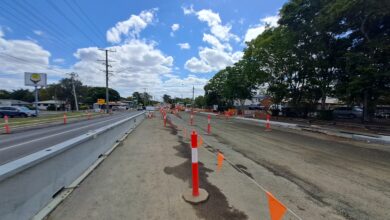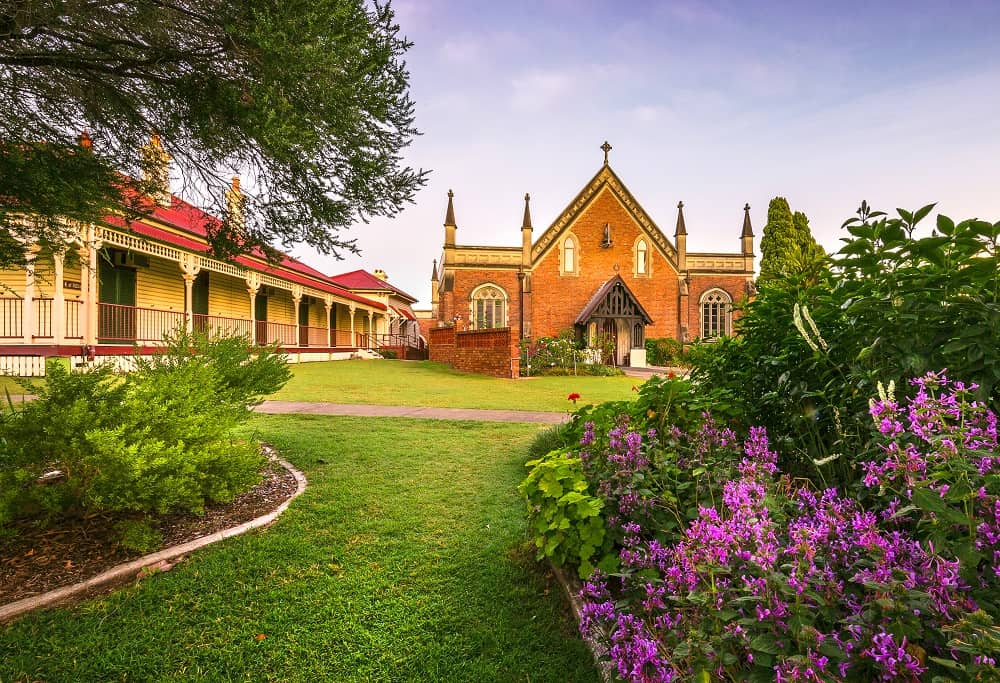
If you own a building or property that is on the Queensland Government’s Heritage Register, you are eligible to apply for a grant to undertake repairs or conserve the original heritage features on your home or even prepare a heritage conservation management plan.
Here in Ipswich we have over 86 sites on the state’s register.
We drive past them every day and a lot of them are very well-known Ipswich landmarks. But there are some lesser known ones that Ipswich First has found on the register.
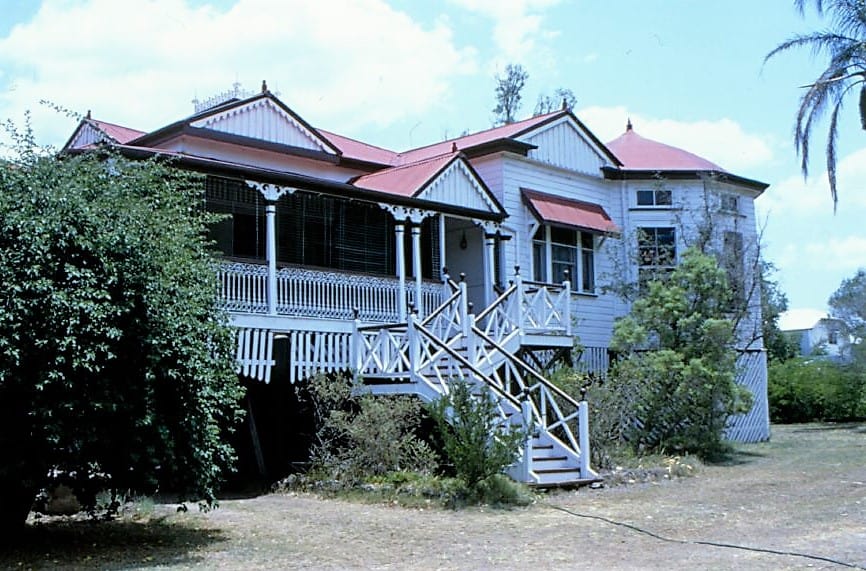
Glendalough, 96 John Street, Rosewood
This home has new owners this year but the original owners, Thomas and Mary Bulcock’s original home with grand features is still largely like it was.
The Bulcock’s were the Rosewood store owners back in 1910 when they purchased 1.25 acres on a prominent intersection.
The home maintains pressed metal ceilings, large verandahs with wrought iron rails.
Coloured glass originally from Belgium gives a range of coloured shadows throughout the day and original light fittings are still in place.
There are established palm trees on the grounds and the home has won several heritage awards.
During the Bulcocks’ residence, Glendalough was a focus for local social occasions. The family was well-known in the community, and TE Bulcock was a member of a local masonic club. About 1923-24 the Bulcocks appear to have sold their Rosewood business, home and left the district.
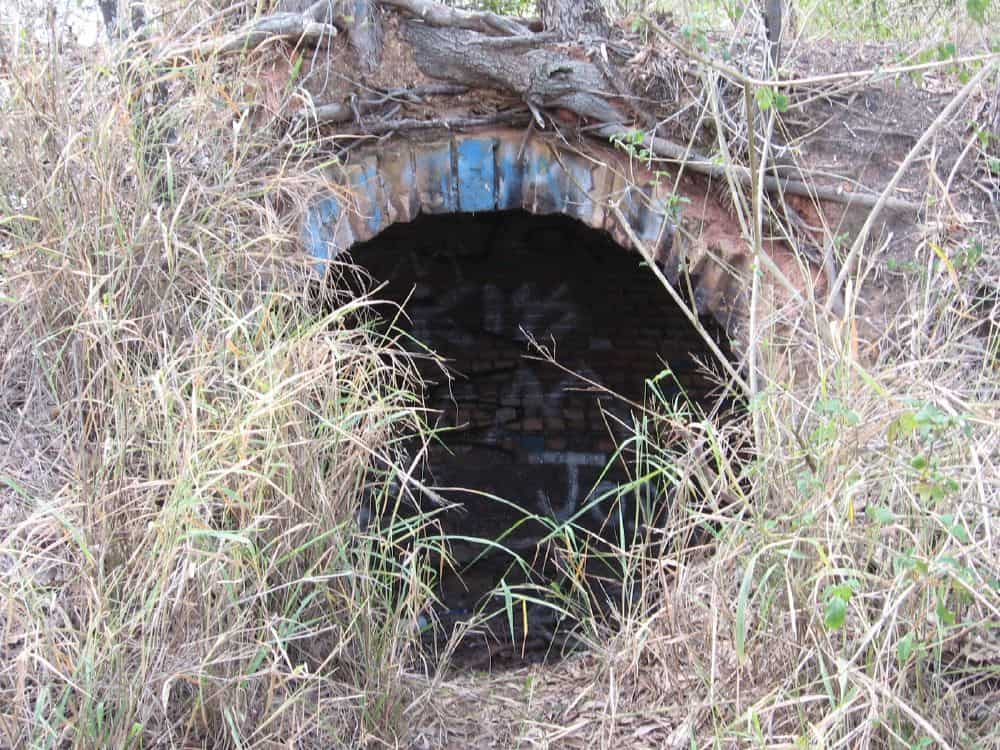
Klondyke Coke Ovens, Parker Lane, North Ipswich
The Klondyke Coke Ovens were part of the Klondyke Colliery located at North Ipswich and were built in the 1940s.
A bi-product of coal mining was the production of coke. The production of coke was usually regarded as a somewhat unimportant side industry to the actual mining of coal. Unlike coal mining, it was not regulated by legislation and as such no systematic records were kept of the early coke production industry in Queensland. Coke is used as both a fuel and as a reducing agent in smelting iron ore and is produced from baking bituminous coal in ovens at temperatures as high as 2,000 degrees Fahrenheit.
The space between ovens was usually filled with rubble and earth to provide insulation and the whole battery surrounded by a stone retaining wall to resist the outward thrust of the brick domes. The Klondyke ovens had a capacity of four to five tons.
Almost two tonnes of coal was required to produce one tonne of coke. It took three days.
The bricks used to construct the ovens are imprinted with a trademark ‘R’ and appear to have come from the local brickworks, Rylance Colliery.
The Klondyke Colliery worked until the early 1950’s.
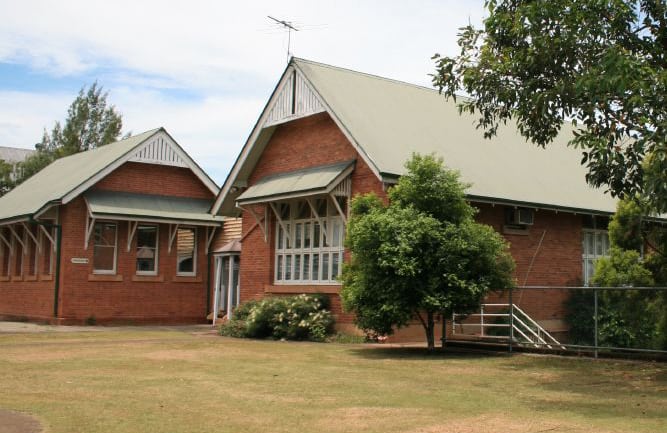
Little Ipswich State School, 12 Omar Street, West Ipswich
In 1861, seven National Schools were opened in Queensland which included the coeducational school at Little Ipswich on 5 August. Little Ipswich (now West Ipswich) was an area of early urban settlement in Ipswich and in 1862 there were 52 pupils enrolled at the school.
The Ipswich West State School and the Ipswich West Special School are important as the layers of school buildings constructed since 1861 reflect the growth of Queensland’s education system.
The 1882 buildings (in the Special School Complex) were built to the standard Ferguson design, ‘Carpenter Gothic’. The brick buildings (in the Ipswich West State School Complex, 1907 – 1919) were constructed in a period which saw variance in design dictated by the size and wealth of the local community.
It has been a place of continuous education and recreation and as a focal point for the local community since 1861.
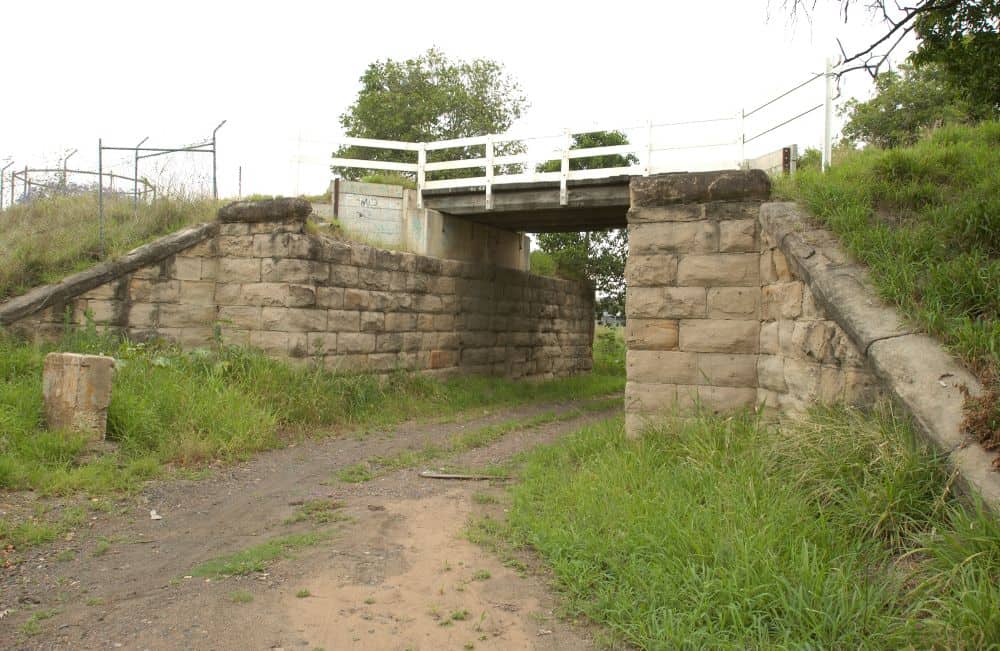
Heiner Road Railway Overpass, 2 Downs Street, North Ipswich
The Heiner Road railway overpass was probably constructed in 1864 over the line that connected the government wharf on the Bremer River with the North Ipswich railway workshop site. It consists of a modern bridge over substantial stone abutments that are a rare survivor of the earliest railway infrastructure in Queensland and evidence for the way in which the railway network was established. It is also one of the very few overpass abutments in Queensland carried out in stone.
The importance of the Heiner Road overpass diminished considerably when the new David Trumpy Bridge across the Bremer was opened in 1965 and the (1865) road bridge was demolished, leaving only its abutments.
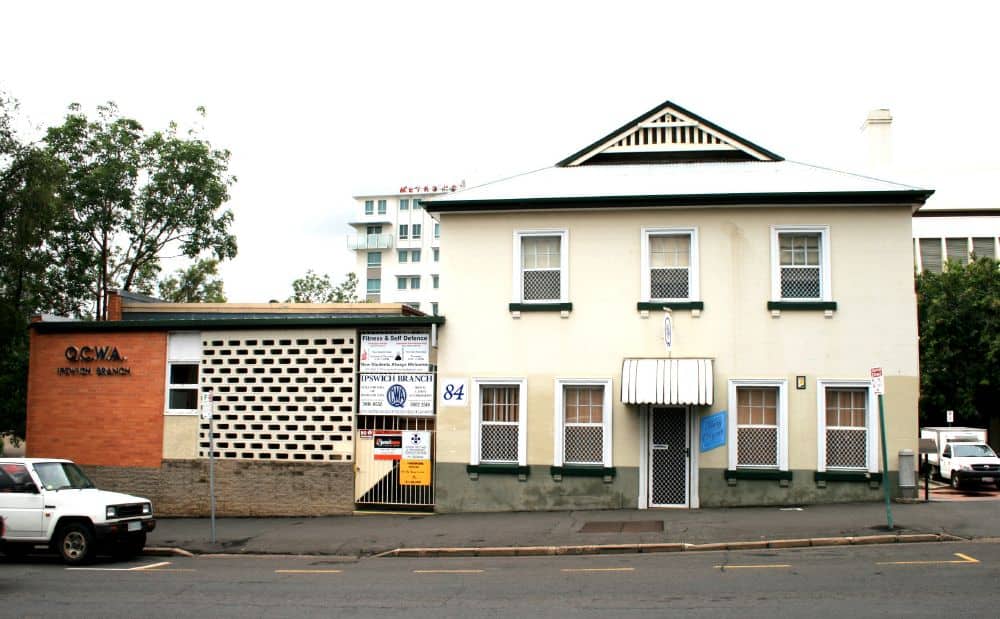
Liberty Hall – Mary Tregear Hostel, Limestone Street, Ipswich
Built between 1857 and 1860, Mary Tregear Hostel is one of the oldest buildings in Ipswich and is a rare example of a simple town dwelling in colonial Georgian style.
The two-storey rendered brick house with a cellar was built for the local chief constable Edward Quinn.
The house then appears to have been rented by blacksmith Hugh Campbell. Hugh’s father, Donald Campbell, had been the first free settler in Ipswich after George Thorn, arriving with his family in 1842 and carrying on his trade as a blacksmith.
The QCWA bought the property in 1942. The house was used as a girls’ hostel and a fibro and timber army building was moved to the site as a meeting hall.
In 1964, the land was subdivided and a coal research laboratory was built on portion of it. The army hut was replaced by a brick hall on the eastern side of the block, and a rear kitchen wing was built, its materials and construction suggesting a date c1960.
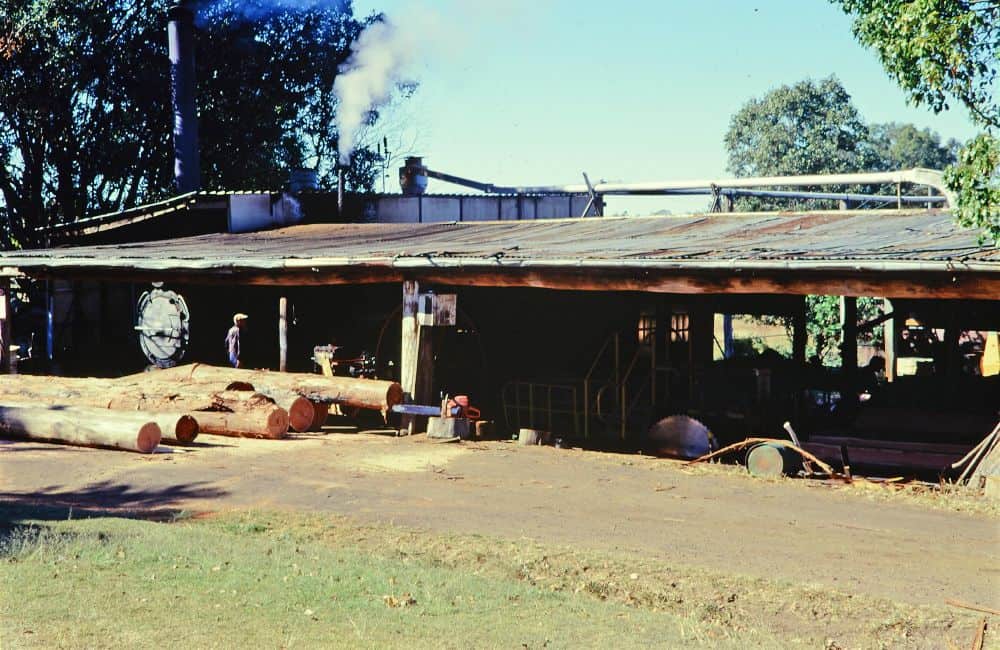
Grandchester Sawmills, Symes Street, Grandchester
This sawmill is one of the few steam powered mills remaining in operation in Australia. It uses a steam engine built by Marshall Sons and Co Ltd Engineers in Gainsborough, England. The engine built c1908 was originally used at the Nestles Condensed Milk factory at Toogoolawah.
Roland Gillam started the Grandchester Sawmill in 1941 and was soon joined in the business by his brother Des and in later years by his son Jeff.
The supplied all types of timber to the Rosewood Coal Mines and firewood to the Queensland Railways.
To this day, the mill whistle is still sounded at 9am for smoko, 11.30am for lunch and 2.30pm for afternoon tea.
The mill was destroyed in 2007 by fire but the owners immediately started its restoration.
Grandchester Sawmills is still operating, being a small family operation cutting mainly crating timber.
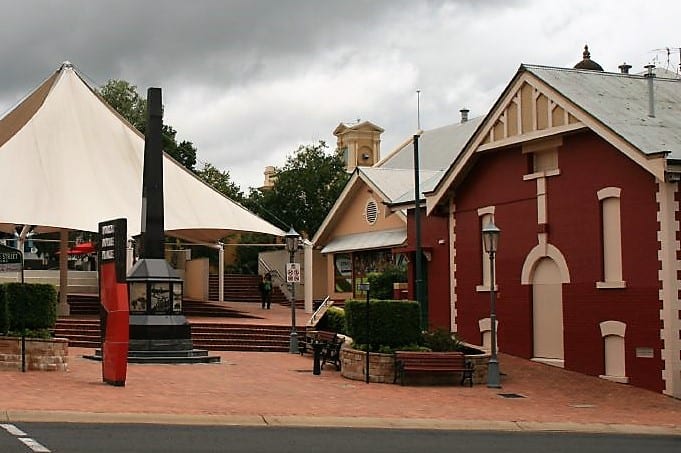
St Paul’s Young Men’s Club – Art Gallery, 48 d’Arc Doyle Place, Ipswich
St Paul’s Young Men’s Club is a two-level brick building constructed in 1911 as meeting rooms for St Paul’s Young Men’s Society. The architect was George Brockwell Gill.
The former St Paul’s Young Men’s Society Hall is important as an example of a purpose-built hall and meeting rooms for a church-based club. It was closely associated with patriotic groups during World War I when it was used as a soldiers’ rest room.
It is also closely associated with the work of Ipswich City Council in providing important cultural services for the community – a library and later an art gallery.
The building now is the Ipswich Community Gallery.
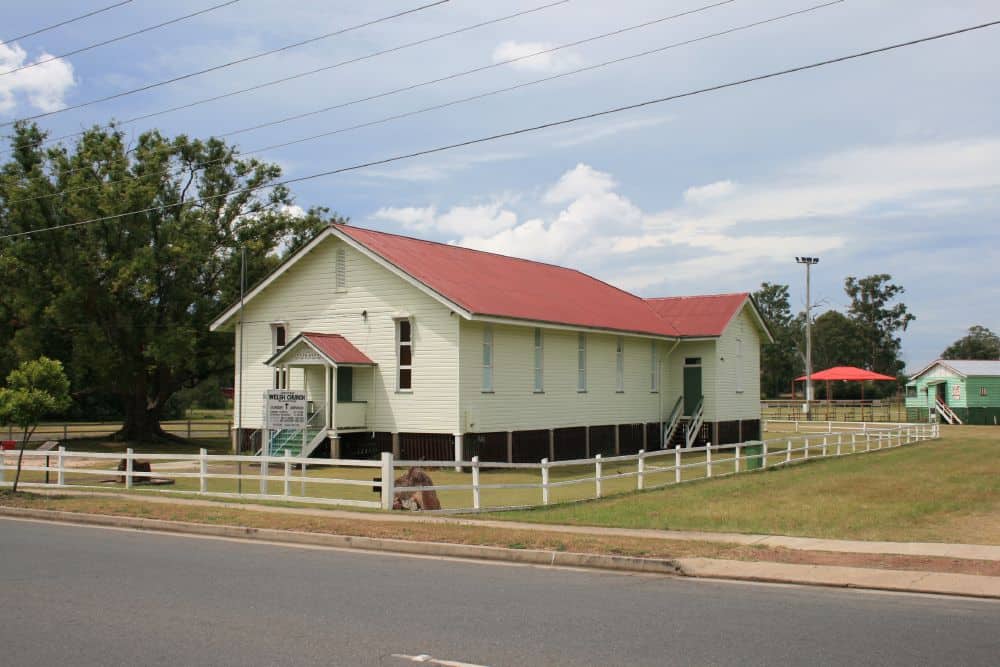
United Welsh Church, 6 Thomas Street, Blackstone
The United Welsh Church was built in 1886.
Lewis Thomas had begun to mine coal at Blackstone in the 1860s. In 1883, a group of Welsh people, formerly slate miners from Blaenau Ffestinog, arrived in Blackstone to work for Thomas. Shortly after their arrival, they held a Protestant church service under a mulberry tree on the banks of Bundamba Creek. They agreed that Welsh nationality took priority over minor sectarian differences and formed a Welsh Church.
Lewis Thomas allowed use of a cottage in Blackstone for services. As the number of Welsh immigrants grew, this became too small and Thomas donated land for a church. The church building opened officially on 1 October 1886.
The church has been a centre for community social life with activities including church teas, clubs, eisteddfodau and hymn festivals. Early church services were held in Welsh, and in the present day, some hymns are still sung in a mixture of Welsh and English, while Sunday school children are taught a few words of Welsh. The first Gymanfa Ganu (hymn festival) was held in 1902 and is still a biennial event.
A local choir was formed to contest this eisteddfod and is still operating as the Blackstone-Ipswich Cambrian Choir. Subsequent eisteddfodau were held in the church or in the School of Arts in Ipswich as interest in the eisteddfod movement grew. In 1888, a Brisbane choir entered the competition and a Brisbane eisteddfod was then held in 1889. These inter-city competitions eventually grew to become the Queensland Eisteddfod, still contested every Easter.
This is the only Welsh Church in Queensland and it is thought that there are only three others in Australia – in Sydney, Melbourne and Western Australia.
The Community Sustainability Action grants – Round 3: Heritage Conservation, will provide up to $40,000 in grant funding.
You have until 8 November to apply. For more information click here.

